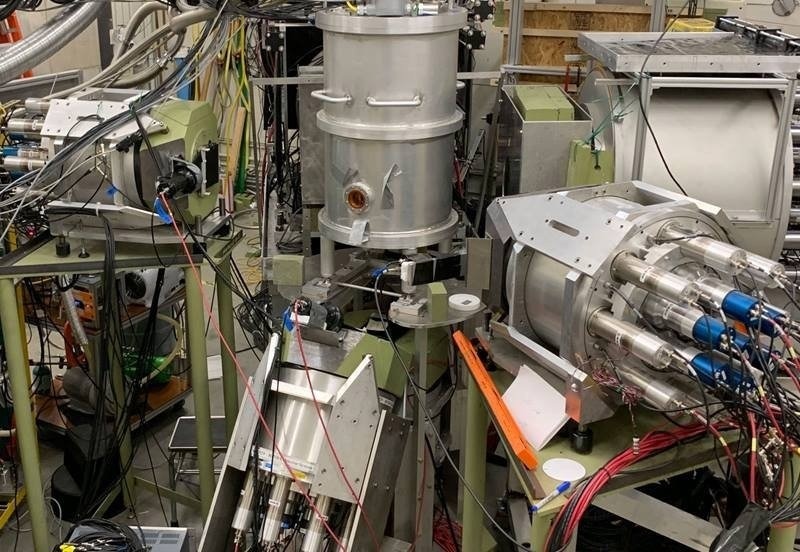The proton is a composite particle composed of central building blocks of gluons and quarks. These mechanisms and their interactions establish the structure of the proton, including its electrical currents and charges.

Compton scattering setup at the high-intensity gamma-ray source. The central cylinder is the liquid hydrogen target. High-energy gamma rays are scattered from the liquid hydrogen into eight large detectors that measure the gamma rays’ energy. Image Credit: Mohammad Ahmed, North Carolina Central University and Triangle Universities Nuclear Laboratory.
This structure becomes deformed when subjected to outer electric and magnetic (EM) fields, an occurrence referred to as polarizability. The EM polarizabilities are a measure of the stiffness against the deformation brought on by EM fields.
By assessing the EM polarizabilities, researchers can understand the proton’s inner structure. This insight helps to confirm scientific understanding of how nucleons (neutrons and protons) develop by comparing the outcomes to theoretical explanations of gamma-ray scattering from nucleons. Researchers refer to this scattering procedure as nucleon Compton scattering.
The Impact
When researchers study the proton at a distance and scale where EM responses rule, they can establish values of EM polarizabilities with great accuracy. To achieve that, they make use of the theoretical framework of Effective Field Theories (EFTs).
The EFTs have the potential to match the illustration of the nucleon structure at low energies to the present theory of the robust nuclear force, known as quantum chromodynamics (QCD). In this study, researchers confirmed EFTs using proton Compton scattering. This method also confirmed the framework and procedure that forms the basis of EFTs.
Summary
Proton Compton scattering can be defined as the process by which researchers disperse linearly or circularly polarized gamma rays from a hydrogen target (here, a liquid target) and then assess the angular distribution of the dispersed gamma rays. High-energy gamma rays possess sufficiently robust EM fields that the response of the charges and currents in the nucleon becomes substantial.
In this research, investigators conducted new measurements of Compton scattering from the proton at the High-Intensity Gamma-Ray Source (HIGS) at the Triangle Universities Nuclear Laboratory. This study offered a unique experimental method for Compton scattering from the proton at low energies with the help of polarized gamma rays.
The research advances the necessity for advanced high-precision measurements at HIGS to enhance the accuracy of neutron and proton polarizabilities determinations. These measurements confirm the theories which connect the low-energy description of nucleons to QCD.
Funding
This study received funding from the Department of Energy Office of Science, the UK Science and Technology Facilities Council Grants, and the National Science Foundation, as well as funds from the Dean of the Columbian College of Arts and Sciences at George Washington University and its Vice-President for Research.
The scientists are also grateful for the financial support provided by the Natural Sciences and Engineering Research Council of Canada and the support of the Eugen-Merzbacher Fellowship.
Journal Reference
Li, X., et al. (2022) Proton Compton Scattering from Linearly Polarized Gamma Rays. Physical Review Letters. doi.org/10.1103/PhysRevLett.128.132502